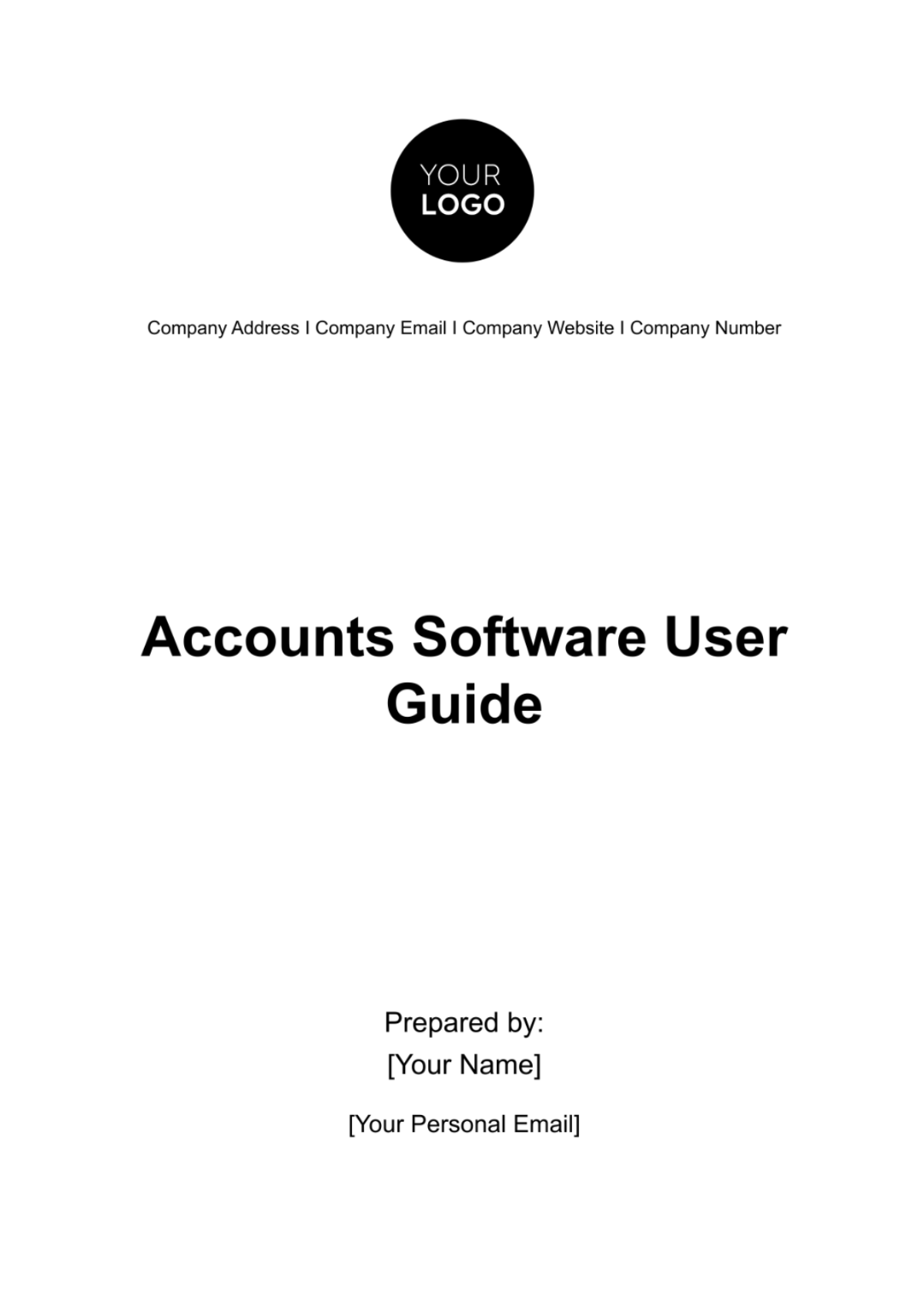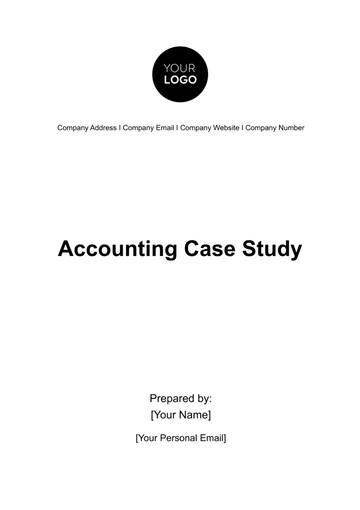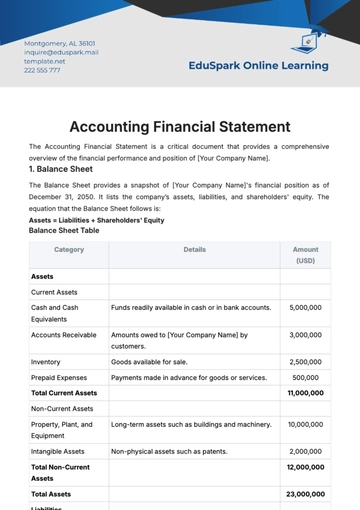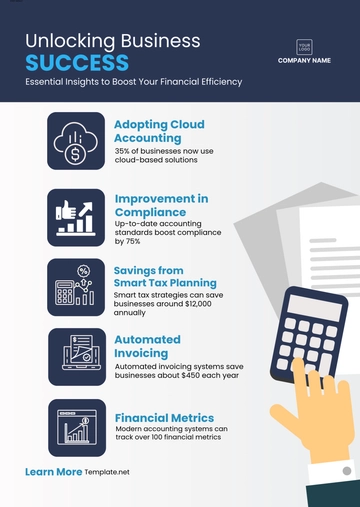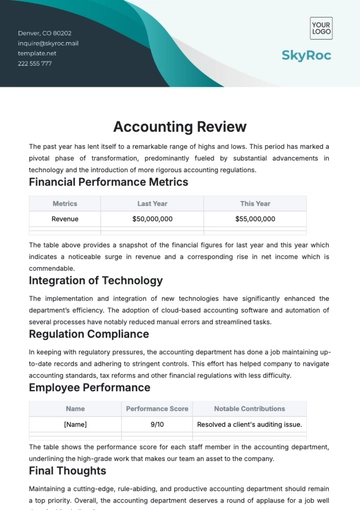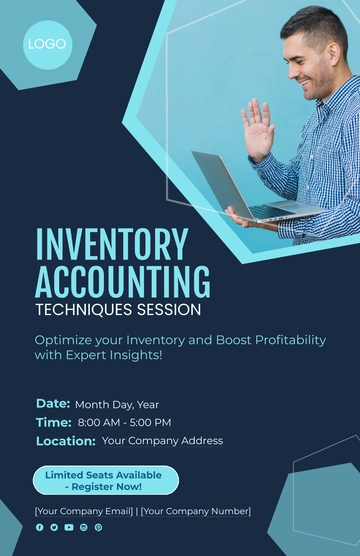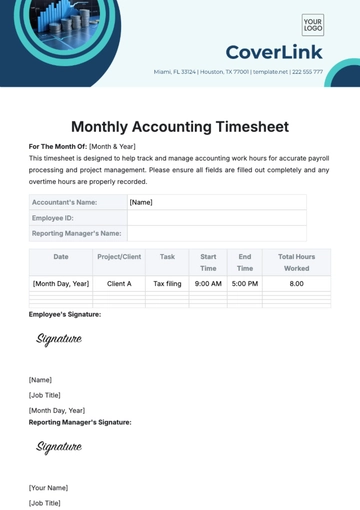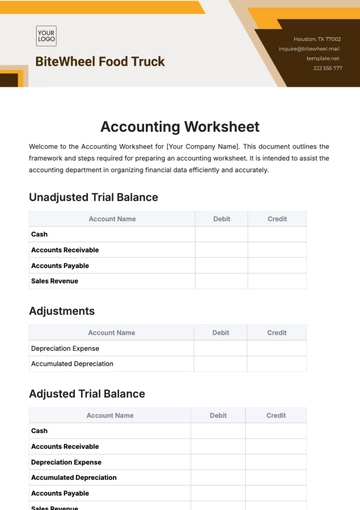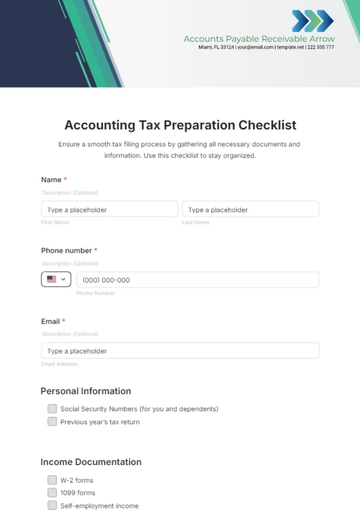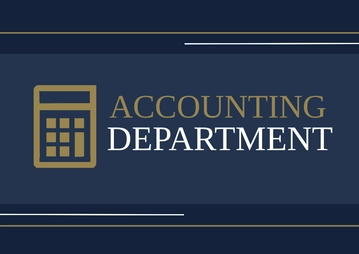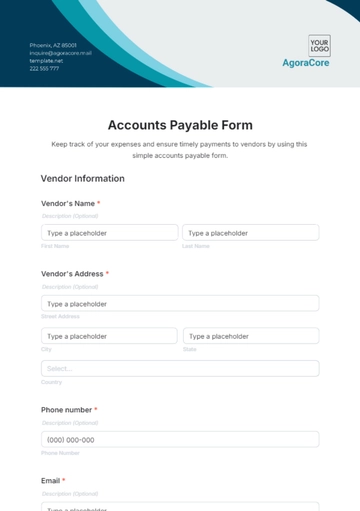Accounts Software User Guide
Introduction
A. Overview of the Accounts Software
The Accounts Software is a comprehensive financial management solution designed to streamline your accounting processes. It offers features such as transaction recording, financial reporting, budgeting, and payroll processing, ensuring efficient and accurate financial management for businesses of all sizes.
B. Purpose of the User Guide
This User Guide serves as a detailed resource to help users navigate and utilize the features of the Accounts Software. Whether you are a novice or an experienced user, this guide provides step-by-step instructions, tips, and best practices to maximize your software experience.
C. System Requirements
Before installing the Accounts Software, ensure your system meets the following requirements:
Operating System: | Windows 10 or macOS 10.15 and above |
Processor: | Intel Core i5 or equivalent |
RAM: | 8 GB minimum |
Disk Space: | 20 GB free space |
Getting Started
A. Installation
Follow these steps to install the Accounts Software:
Download the installation package from [Your Company Website].
Run the installer and follow on-screen instructions.
Enter your license key: XXXX-XXXX-XXXX-XXXX.
Complete the installation process.
B. Activation and Licensing
To activate your software license:
Open [Your Accounts Software Name].
Navigate to the License Activation section.
Enter your license key: XXXX-XXXX-XXXX-XXXX.
Click 'Activate.'
User Registration
A. Creating a New Account
To create a new account in the Accounts Software, follow these steps:
Open the software and click on the "Create Account" button.
Fill in the required details:
Full Name: Your Name
Email Address: Your Email
Password: Choose a secure password
Click 'Submit' to create your account.
Upon successful account creation, you will receive a confirmation email with further instructions. Follow the link provided in the email to verify your account and gain full access to the Accounts Software.
B. Account Management
Manage your account efficiently with the following options:
Updating Account Information:
Go to the 'Account Settings' section.
Update the necessary information, such as contact details or password.
Click 'Save Changes.'
Deleting Your Account:
If you decide to delete your account, please follow these steps:
Contact our support team at [Your Company Email] using the email associated with your account.
Our support team will guide you through the account deletion process.
Confirm your identity for security purposes.
Once verified, your account will be permanently deleted.
Dashboard Overview
A. Navigation
The dashboard of the Accounts Software consists of the following key elements:
Menu Bar: Located on the left, it provides access to different modules, including Transactions, Reports, Budgeting, and more.
Widgets: Customizable widgets for quick insights into your financial data.
Graphs and Charts: Visual representation of your financial performance, including income trends, expense breakdowns, and account balances.
B. Widgets and Modules
Explore the various widgets and modules available on the dashboard:
Balance Overview: Displays current account balances for easy monitoring.
Recent Transactions: Shows a list of the latest transactions for quick reference.
Income vs. Expenses Chart: Visualizes the distribution of income and expenses over a selected period.
Transactions
A. Recording Transactions
Efficiently record transactions in the Accounts Software using the following steps:
Click on the 'Transactions' module in the menu bar.
Select 'Record Transaction.'
Enter the transaction details:
Date: MM/DD/YYYY
Description: Brief description of the transaction
Amount: Specify amount
Category: Choose from predefined categories such as 'Income,' 'Expense,' 'Transfer,' etc.
Save the transaction.
Upon saving, the transaction details will be reflected in your account ledger, providing a clear record of financial activities.
B. Editing and Deleting Transactions
To modify or remove transactions:
Editing Transactions:
Navigate to the 'Transactions' module.
Find the transaction to edit.
Click 'Edit' and make the necessary changes.
Save the updated information.
Deleting Transactions:
Access the 'Transactions' module.
Locate the transaction to delete.
Click 'Delete' and confirm the action.
Care should be taken when deleting transactions, as this action may affect the accuracy of your financial records.
C. Bank Reconciliation
Reconcile your bank statements seamlessly:
Go to the 'Bank Reconciliation' section.
Enter the statement date: MM/DD/YYYY.
Compare the transactions in the Accounts Software with your bank statement.
Mark transactions as cleared to reconcile.
Bank reconciliation ensures that your records match those of your financial institution, providing accuracy and confidence in your financial data.
Reports and Analytics
A. Financial Reports
Generate insightful financial reports with the Accounts Software:
Income Statement:
Navigate to 'Reports.'
Select 'Income Statement.'
Choose the date range: Start Date to End Date.
View and analyze the generated report.
Balance Sheet:
Access 'Reports.'
Choose 'Balance Sheet.'
Specify the date range: Start Date to End Date.
Review the generated balance sheet.
Financial reports provide a snapshot of your organization's financial health, aiding in informed decision-making.
B. Customizing Reports
Tailor reports to meet your specific needs:
Open the desired report.
Use the customization options to adjust date ranges, categories, and other parameters.
Save or export the customized report for future reference.
Budgeting and Forecasting
A. Creating a Budget
Effectively manage your finances by creating a budget in the Accounts Software:
Navigate to the 'Budgeting' module.
Click on 'Create Budget.'
Define budget categories and allocate funds:
Category: Specify categories such as 'Utilities,' 'Salaries,' 'Marketing,' etc.
Budget Amount: Specify amount
Save the budget.
Creating a budget helps you plan and allocate resources strategically.
B. Monitoring Budget Performance
Track your budget vs. actuals to assess financial performance:
Access the 'Budgeting' module.
View the 'Budget vs. Actuals' report.
Analyze variances and adjust future spending as needed.
Monitoring budget performance allows you to make informed financial decisions and maintain fiscal responsibility.
Payroll Processing
A. Employee Setup
Efficiently manage employee information in the Accounts Software:
Go to the 'Payroll' module.
Click 'Add Employee.'
Enter employee details:
Name: Employee Name
Position: Employee Position
Salary: Specify amount
Save the employee information.
B. Payroll Run
Process payroll seamlessly with the Accounts Software:
Access the 'Payroll' module.
Click 'Run Payroll.'
Review and verify employee salaries.
Confirm and process payroll.
C. Tax Compliance
Ensure tax compliance with the following steps:
Navigate to 'Tax Settings' in the 'Payroll' module.
Verify tax rates and settings.
Make adjustments as needed.
Save changes.
Security and Permissions
A. User Roles
The Accounts Software provides various user roles to control access and permissions:
Administrator:
Manager:
Staff:
B. Data Encryption
All data in the Accounts Software is encrypted using industry-standard protocols:
Data in Transit:
Encrypted using SSL/TLS during transmission.
Data at Rest:
Stored with AES-256 encryption.
This ensures the security and confidentiality of your financial information.
Troubleshooting
A. Common Issues and Solutions
Encounter a problem? Refer to the following common issues and solutions:
Issue: Unable to Log In
Solution: Reset your password via the 'Forgot Password' link.
Issue: Transactions Not Updating
Solution: Check your internet connection or contact [Your Company Email]
Issue: Software Crashes
Solution: Update to the latest version or reinstall the software.
Accounting Templates @Template.net
